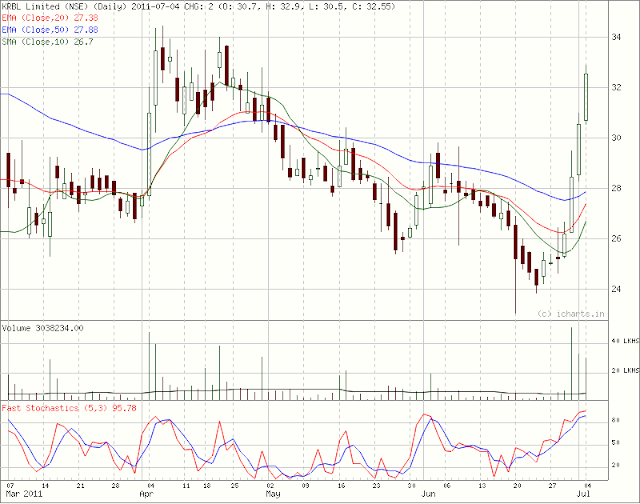As I mentioned in previous post I have been trying to get back into stock market since then. My desire to trade or invest has grown considerably in the last few weeks. Especially after I read my most favorite book the second time. It is “How I Made 2 Million Dollars in the Stock Market”.
The book is not only a classic; it is also packed with very powerful advice and analysis. As I was reading it second time I had noticed certain things that I had conveniently ignored when I read the first time. First time, I had only focused on things that I had just learned at that time and that matched pretty well with bull market and my few exceptionally successful trades – 154% in RNRL, BHUSANSTL 13%, POWERGRID 15%, ARVINDMILL 14% in that year. There are other very few swing trades in my portfolio that resulted in profits but not so much.
As the bear market started in 2008, I really didn’t have a particular strategy for entry or exit. I somehow ignored the main strategy taught in that book and got excited about short term profits through swing trading. These profits were neither many nor large enough to cover the losses of failed operations in a down trending market. My profit-loss worksheet is full of the losses that followed this time and their total overshadowed everything mentioned above. The deepest loss was 90% in SELMCL.
As I read the same book again this time I was able to notice the most important analysis and reasons for both entry and exit strategies for the only best way (long term) to gain in the stock market.
Nicolas Darvas wasn’t just some dancer cum investor. He was reported to be awesome at whatever he does. Atleast I learned he was “super” awesome at stock market investing not just for pulling 2 Million Dollars in a 18-month period but for the powerful analysis behind his moves. I should have learned this atleast two years back. Now I sincerely regret this.
In his 7 year long investing journey, Darvas summarizes below points as he develops his famous box theory after first 5 years.
My objectives in the stock market:
Right stocks
Right timing
Small losses
Big profits
My weapons:
Price and Volume
Box theory
Automatic buy-order
Stop-loss sell-order
The entire 200 page book could be summarized in those 10 lines. But it was not all. The most important and most often repeated advice was that we can go wrong despite all our analysis and strategies. There is no such thing as guarantee in the stock market. This is very powerful information at times to let us avoid small losses from turning into large losses. You must have heard yourselves saying, “no way this can be happening”. For those with little or no experience in stock market, this might appear like something at hindsight but for the serious investor it is like a universal law and makes a lot of things clearer.
Now suddenly a lot of things became clear to me. Why it was felt so exciting to trade for short term (a week to a month), later why I got caught up in false swing traps, etc. But every time I made the decision to stop investing, after a string of losses, was the only right decision I had made since the beginning. I should also have avoided diverting attention away from stock market. I can just spend time sharpening the saw if I got fed up with a string of losses.
“Small losses and big profits” was the most striking idea of Darvas. It is easy to know it at hindsight but difficult to apply in practice. That is why he adds other objectives and weapons. When all of these are combined one can develop a powerful strategy. For a long time I wasn’t able to understand one of the Q&A at the end of the book (you bought smack in the middle of a trading range). It was on page 184. This time I was able to get the reason behind this answer.
I am taking these 9 points from Darvas’ book and trying to materialize my own trading/investing strategy that can improve consistency. I liked this book a lot not only because of insightful analysis but also because it is entertaining like a novel. I made a point to keep reading it from time to time.
Continue reading...




















